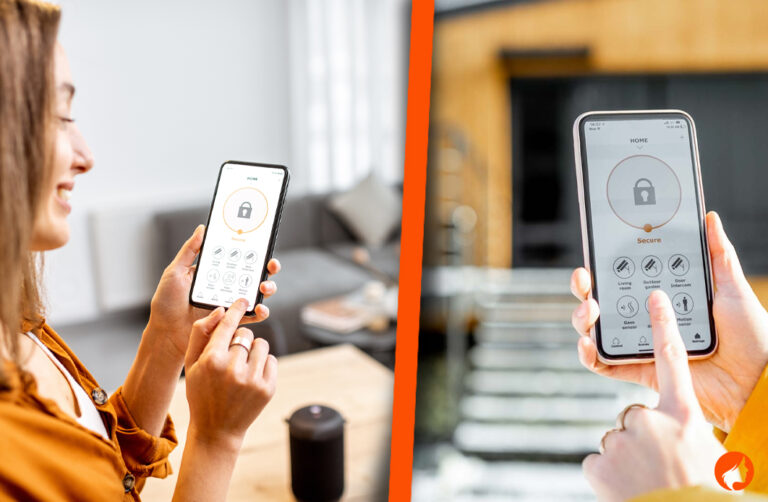Key Takeaways
- Discover the essentials of residential security systems to keep your home safe.
- Learn what features to look for in a modern security system.
- Understand the benefits of integrating smart technology into home security.
- Gain insights on how to choose the right system for your individual needs.
Introduction to Residential Security Systems
In today’s fast-paced world, ensuring the security of our homes is more critical than ever. Residential security systems play an essential role in this regard by offering a robust line of defense against potential intruders. By tapping into modern technologies, these systems provide comprehensive solutions that prevent unauthorized access and monitor for potential emergencies like fires or gas leaks. Homeowners increasingly find solace in these systems’ capabilities to offer both safety and surveillance, ensuring that loved ones and valuable items are protected at all times. This article will introduce you to the basics of home security systems, providing you with the knowledge necessary to make strategic decisions tailored to your unique circumstances.
Moreover, it’s not just about protection from outside threats. Smart home technologies are smoothly integrated with modern security systems, which are made to be user-friendly and accommodate daily life. As families grow and lifestyles evolve, security systems provide the flexibility to accommodate these changes, ensuring continuous peace of mind. Whether confronting potential intrusions or simply automating daily tasks, today’s systems serve as an indispensable part of modern home living.
Key Components of a Home Security System
At the heart of any effective home security solution are its components. A standard system typically comprises cameras, alarms, sensors, and control panels—all working in concert to provide a protective shield. Cameras are particularly vital, offering real-time footage that can be accessed remotely via smartphones or computers. They serve as the eyes of the system, ensuring that any unusual activity is promptly captured and recorded.
Alarms, on the other hand, act as deterrents and alert systems. Upon detecting any unauthorized entry, they sound off loudly to notify occupants and neighbors while simultaneously informing monitoring services. Sensors installed in windows and doors ensure that any breach triggers an immediate alert, thereby fortifying points of entry that are often vulnerable. The control panel, often the system’s central hub, allows users to manage all these functions efficiently, offering the convenience of arming or disarming your security setup with a mere tap.
The Role of Smart Technology in Modern Security
The advent of smart technology has reshaped how we approach home security. From AI-driven analytics to Internet of Things (IoT) connectivity, these innovations have paved the way for systems that learn and adapt over time. Smart technology allows homeowners to control their security apparatus remotely, offering unparalleled convenience and assurance. According to insights on the impact of smart technology on home security, the integration of AI reduces instances of false alarms by accurately differentiating between routine and suspicious activities.
Furthermore, smart home integration offers benefits beyond security. For instance, systems can be programmed to adjust lighting, thermostats, and even window blinds, optimizing energy usage and enhancing lifestyle comfort. Through the use of mobile apps, homeowners are empowered with real-time alerts and the flexibility to manage their home’s security with ease. As technology continues marching forward, the integration of such capabilities not only advances security measures but also enriches the quality of home life.
Evaluating Security System Features
Evaluating the features of a security system is crucial for illuminating its potential value within a household. Features such as remote access allow for real-time monitoring no matter where you are, providing an added layer of security via constant surveillance. Video monitoring offers a real-time glimpse into what’s happening at home, while customizable alerts can be tailored to notify owners about specific activities, such as when someone enters a designated area.
Further, advanced features like night vision ensure that the lack of daylight never compromises the system’s effectiveness, making sure that every corner is under watchful surveillance regardless of time. Weather-resistant capabilities for outdoor cameras further reinforce this, ensuring the equipment endures various environmental factors without hitches. Such comprehensive functionality means that you can rest assured knowing your home and family are well-protected, day or night.
DIY vs. Professional Security Systems
One of the more common decisions homeowners face is whether to install their own security system or enlist professional services. DIY systems present enticing advantages, primarily in the form of cost savings and flexibility. These systems are often wireless and easy to install, making them perfect for renters or those who might want to take their security setup with them should they move.
Conversely, professional systems come with the benefit of expert installation and support. They are often best for larger properties or complex setups requiring extensive coverage, as professionals can tailor the system to meet precise needs. Additionally, many professional systems include maintenance packages that ensure the system remains in optimal condition. Your individual preferences and circumstances will heavily influence which route to take.
Tips for Choosing the Right Security System
Selecting the most fitting security system requires careful thought and evaluation. Begin with a clear assessment of your property’s unique vulnerabilities. Whether it’s frequent blind spots or specific areas that require heightened monitoring, knowing these specifics shapes an effective protection strategy. This choice is influenced by your personal security priorities as well as the size and layout of your home.
User-friendliness is another significant factor—select a system with a user interface that corresponds with your comfort level. Mobile integration offers convenience and control, allowing immediate response to alerts or real-time monitoring. Lastly, take advantage of reviews and professional guidance to ensure your chosen system offers all the functionality needed to protect what you cherish.
Must Read: 5 Key Benefits of Regular Pavement Maintenance for Businesses
